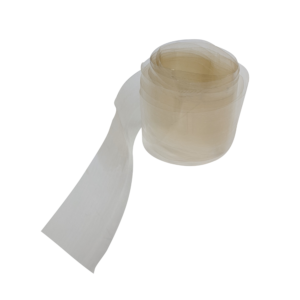Objective:
The purpose of this experiment is to visually demonstrate the processes of diffusion and osmosis using dialysis tubing as a semipermeable membrane. By testing for the presence of glucose, students will gain an understanding of how molecules move across a membrane and how concentration gradients influence the direction of movement.
Background Information:
- Diffusion is the movement of particles from an area of higher concentration to an area of lower concentration. This continues until equilibrium is reached.
- Osmosis is a specific type of diffusion involving the movement of water molecules through a semipermeable membrane from a region of lower solute concentration to a region of higher solute concentration.
- A semipermeable membrane allows some molecules to pass through while blocking others based on size and polarity. In the context of this experiment, the dialysis tubing acts as a semipermeable membrane.
Materials:
- Dialysis tubing (semipermeable membrane)
- Distilled water
- Glucose solution
- Procedure:
- Prepare the Dialysis Bag:
- Soak the dialysis tubing in water for 3-4 minutes to soften it.
- Tie one end of the dialysis tubing securely with a rubber band to form a small bag.
- Rub the open end of the bag between your fingers to separate the edges.
2. Fill the Dialysis Bag:
- Add 50 drops of glucose solution to the dialysis bag.
- Use a glucose test strip to test the solution inside the bag. Record the results (the strip should indicate the presence of glucose).
3. Seal and Prepare the Bag:
- Rinse the outside of the dialysis bag thoroughly under running water to remove any excess glucose.
- Seal the open end of the dialysis bag with a rubber band, leaving a small amount of extra space for fluid expansion.
4. Observation and Testing:
- Mark the water level on the outside of the beaker.
- After 30 minutes, remove the dialysis bag and test the solution in the beaker with a glucose test strip. Record the results (the strip should indicate the presence of glucose).
Questions:
- Which substances entered the membrane, and which substances left the membrane? What experimental evidence supports your answer?
- Based on your observations, rank the following by relative size from smallest to largest: glucose molecules, water molecules, and membrane pores.
Explanation:
- Osmosis caused the water molecules to move into the dialysis bag, where they diluted the contents of the bag.
- Diffusion allowed glucose to move from the higher concentration inside the bag to the lower concentration outside, as confirmed by the positive glucose test in the beaker.
This experiment demonstrates how diffusion and osmosis work in a semipermeable membrane system and highlights the movement of water and smaller molecules across the membrane.

![glucose plastic main Scientific Glucose Test Strips, <span class="bldppm">0-3000 mg/dL</span> [Bag of 50 Plastic Strips] for Food Science or Osmosis/Diffusion Experiments](https://bartovation.com/wp-content/uploads/2020/08/glucose-plastic-main-300x300.png)
